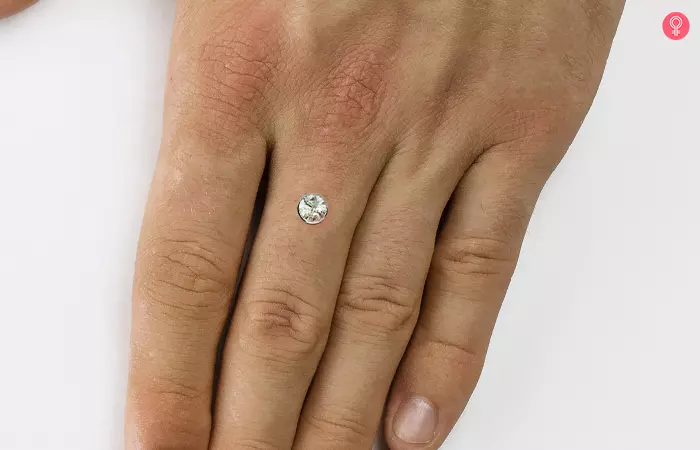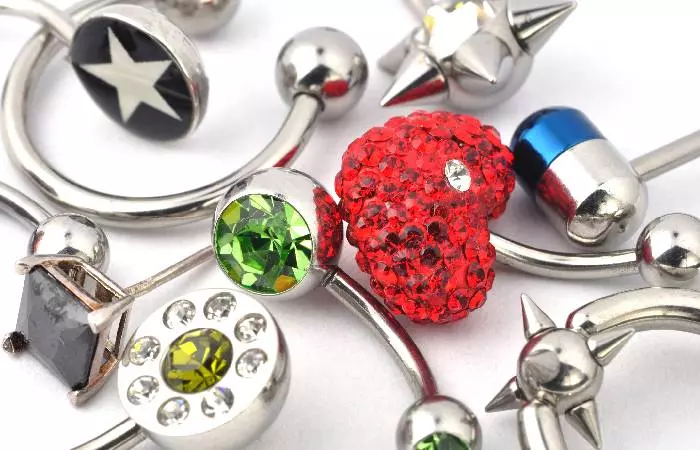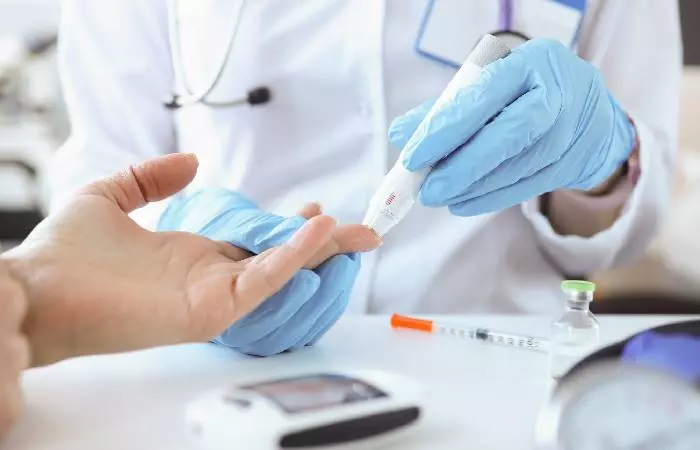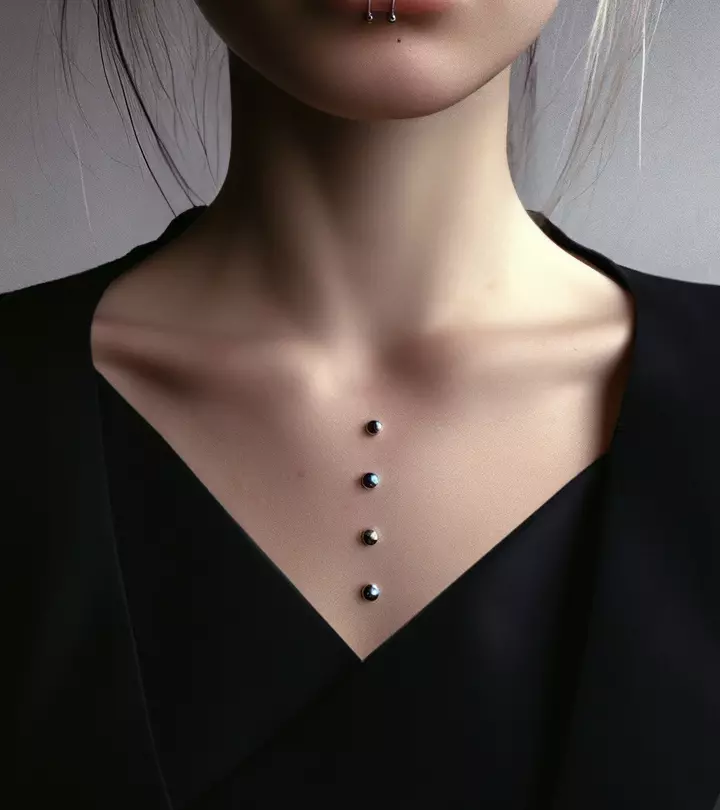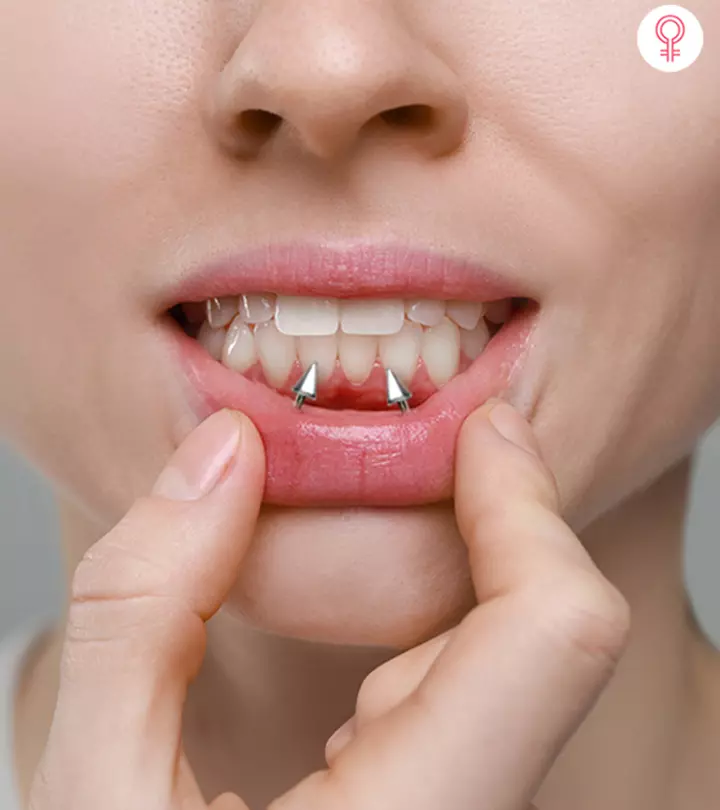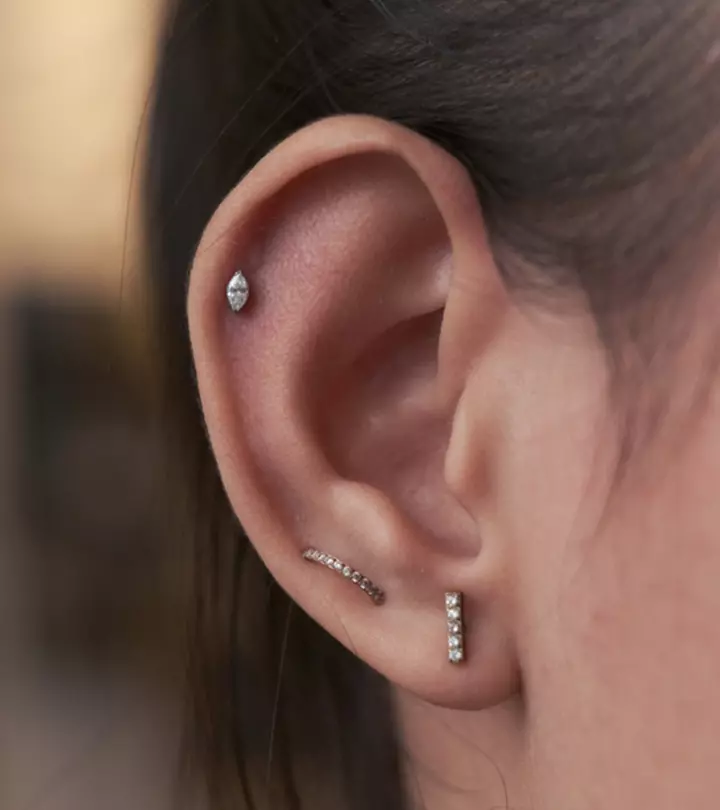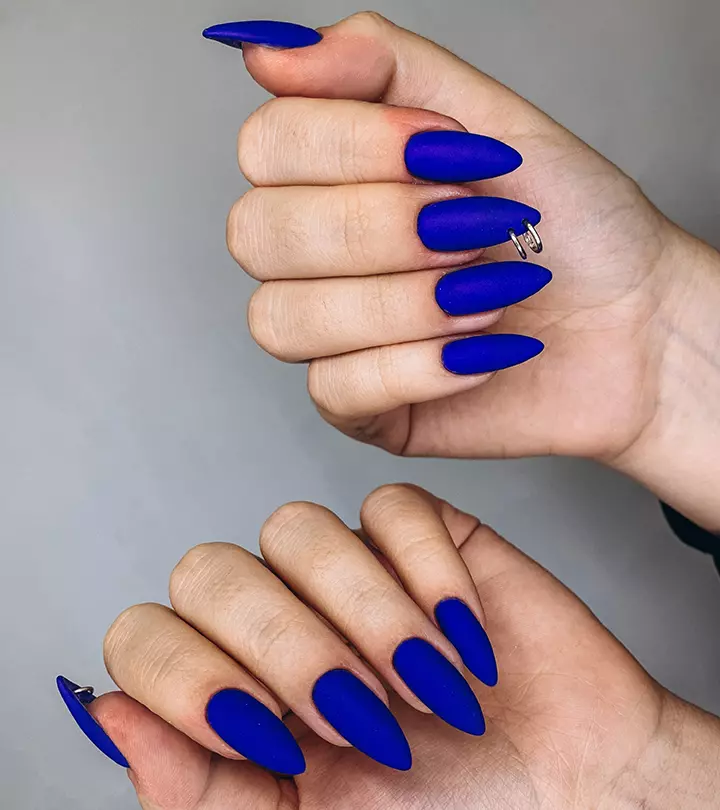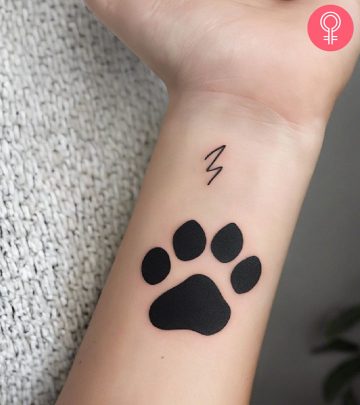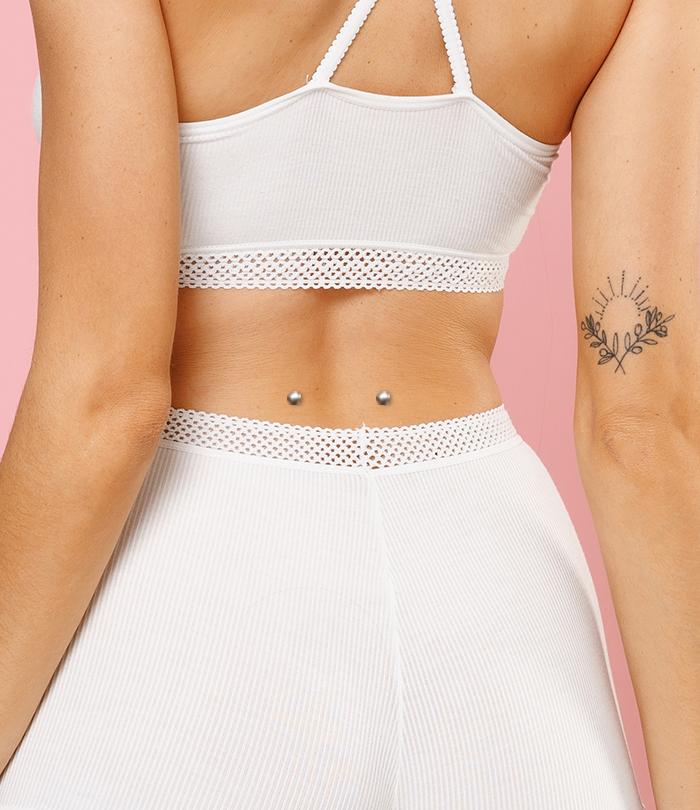Finger Piercing: Procedure, Jewelry, Types, And Aftercare
Adorn your hand with this unique piercing that is bound to make heads turn!
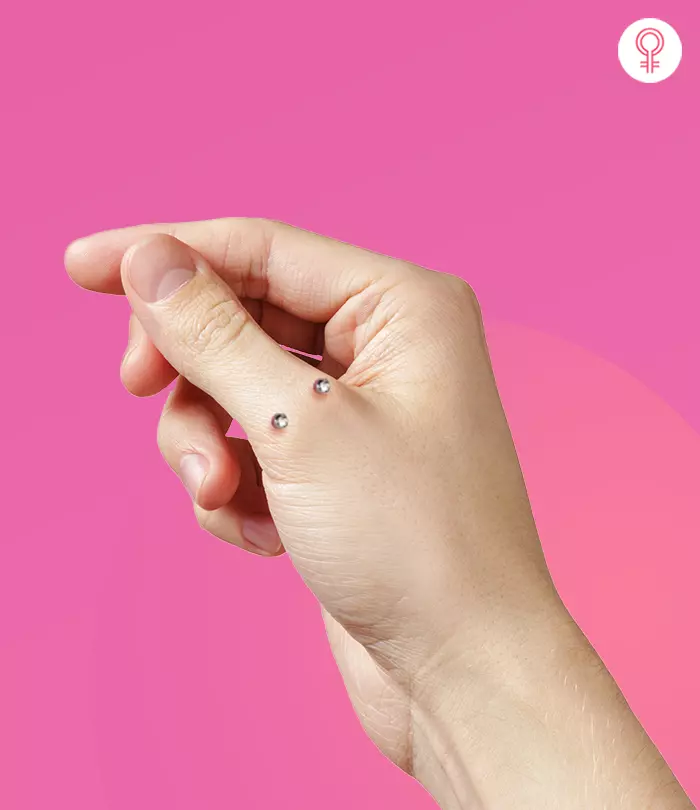
Image: mage: StyleCraze Design Team
If you are looking for an alternative to traditional jewelry, you may want to consider a finger piercing. These piercings are becoming increasingly popular among people who want to push the boundaries of fashion and make a bold statement. This trendy piercing usually sits at the base of your finger and creates the illusion of a ring that loops gracefully around it. However, there are several other spots on your fingers that you can get pierced as well. This article will give you all the information you need about the procedure, types, and aftercare regimen for finger piercing. Keep reading to learn more!
 Piercing Guide: Finger Piercing
Piercing Guide: Finger Piercing- Placement: Several spots on the fingers, like the base, the webbing between fingers, the fingertips, or under the skin as a dermal anchor
- Best Jewelry: Surface barbells
- Cost: $35 to $50, excluding jewelry
- Pain Level: Medium
- Healing Time: 12 months
In This Article
Finger Piercing Procedure
Getting a finger piercing is a straightforward process. Choosing a reputable studio with experienced piercers committed to cleanliness is crucial when embarking on the journey of getting a finger piercing. A piercer who specializes in surface piercings will clean your finger well and use a surgical pen to mark where the piercing will go.
Once everything is prepped, the piercer will use a sterile, hollow needle to create the piercing, making an entrance and exit point in your chosen spot. There might be some discomfort, so be prepared for a pinch. The good news is, it is quick.
Finally, the jewelry, which is typically a small barbell or a specially designed surface bar, is put in place. As soon as the jewelry is secured, the process is complete. The key to a smooth finger piercing experience is a clean environment, proper technique, and a steady, experienced hand from a professional piercer.
However, one cannot evade the pain involved with the process. So, let us check out the rating of this piercing on the pain scale between 1 and 10.
How Painful Is Finger Piercing?
When it comes to a finger piercing, it is natural to feel a bit of anxiety about the pain. When the needle pierces through your skin, you are likely to experience a sting. The intensity of this discomfort varies from person to person, as pain thresholds differ widely.
On a scale of one to ten, finger piercing falls in the moderate zone—about a 4 to 6 for most people. The sensation is much like mild pain—it is a quick pinch followed by some immediate tenderness. Initial swelling is also not uncommon, so a bit of throb or ache in the days following the procedure is entirely normal. Rest assured, the pain is fleeting, and proper aftercare can help manage it well.
Let’s turn our attention to the various types of finger piercings that can be admired by trendsetters and enthusiasts alike. Each type boasts its unique flair and may influence your decision on which style connects best with your taste.
Types Of Finger Piercings
Finger piercings have emerged as a fascinating form of self-expression. Far beyond the confines of traditional jewelry, these piercings offer a range of options to personalize your style with an edgy twist. From subtle hints of elegance to more pronounced statements, here’s a look into the varied and unique types of finger piercings available for those seeking to make a distinctive mark on their aesthetic.
1. Finger Surface Piercing
- This type of piercing places jewelry at the base of the finger, mimicking the position where a ring would traditionally lay.
- It features surface bars or barbells that are aligned parallel to the skin, creating a sleek appearance similar to body piercing jewelry or cartilage piercing jewelry.
2. Dermal Finger Piercing
- A dermal finger piercing also recognized as a microdermal piercing is characterized by a microdermal anchor that is placed under the top layer of the skin on your finger, with less risk of impacting any critical nerves.
- With this type, you can swap out various jewelry tops, allowing for versatility and personal expression right at the tip of your fingers. It can be used as an alternative to wedding rings.
3. Finger Web Piercing
- This type of piercing, situated between your fingers, allows for a more subtle and concealed type of embellishment.
- Though its placement is intriguing, it is important to note that the finger web piercing may have a higher risk of rejection and risk of infection due to frequent movement in that area.
4. Finger Tip Piercing
- As bold as it is unique, in the fingertip piercing the body piercing jewelry is inserted at the very end of your fingertip.
- This piercing is an immediate attention-grabber, providing a dramatic and decorative embellishment.
Remember, all finger piercings require careful consideration and diligent aftercare to ensure successful healing and minimize the risk of complications. An experienced body piercer is adept at suggesting the most compatible surface or cartilage piercing jewelry alternatives that fit client profiles.
 Trivia
TriviaYou might be curious about which types of jewelry complement these creative piercings best. Let’s transition from the ‘what and where’ to the ‘with what,’ diving into the optimal jewelry choices that not only enhance the visual appeal of each piercing type but also promote comfort and healing.
What Type Of Jewelry Is Best For Finger Piercings?
When picking out jewelry for your finger piercing, it is worth considering the various types that are well-suited for this kind of adornment:
- Surface Bars: Ideal for finger surface piercings, these bars are designed to lie flat against the skin. Surface bars help to minimize movement and tissue trauma, which can encourage better healing and comfort.
- Curved Barbells: Another excellent choice for finger piercings, curved barbells follow the natural shape of the finger. Their form helps limit the jewelry’s movement and can decrease the risk of the piercing getting caught or snagged.
- Microdermal Tops: For dermal piercings, a range of microdermal tops can be screwed onto the anchored base that sits under the skin. Microdermals allow for various styles, from subtle gems to intricate designs, and you can change the tops according to your preferences once your piercing has healed.
The materials of these jewelry pieces are crucial, too.
- Surgical stainless steel is popular for its resistance to rust and scratching, making it a long-lasting and safe option for sensitive skin.
- Titanium touts exceptional biocompatibility, which minimizes the risk of allergic reactions, it is lightweight and available in various colors (1).
- Gold, especially in purities like 14KT or 18KT, provides a classic and hypoallergenic choice, but ensure it is solid and not plated to avoid exposing potentially irritating metals.
- For those with heightened sensitivities, seeking out nickel-free and explicitly labeled hypoallergenic jewelry is crucial to maintain comfort and avoid adverse reactions from your piercing (2).
 Did You Know?
Did You Know?Elegance and edginess come at a price, so let’s delve into the costs associated with getting a finger piercing—the investment you will make for this unique form of self-expression.
How Much Does A Finger Piercing Cost?
If you are considering getting a finger piercing, budgeting for the experience is an important step. Getting a finger piercing will usually cost you between $35 and $50 at a professional piercing studio. This price often includes the piercing service and a basic piece of jewelry. If you want fancier jewelry, the price will go up. Remember, prices can change depending on where the studio is located and what they normally charge. So make sure to think about the total cost, both for the piercing itself and the jewelry you pick out. It is a good idea to check with the piercing studio beforehand to get the exact pricing details, which could help you avoid any surprises.
While the cost is an essential factor to consider when getting a finger piercing, we will now explore what the piercing’s healing journey looks like, including the timeline you can anticipate for your finger piercing to fully heal.
Healing Time For A Finger Piercing
When you get a finger piercing, patience truly becomes a virtue—especially when it comes to healing. Generally, a year is the rule of thumb for the time it takes for a finger piercing to heal completely.
This timeframe might sound extensive, but remember, fingers are involved in almost everything we do. That continuous action means they need more time to mend. It is key not to rush the process; giving your piercing a chance to heal at its own pace is critical for avoiding complications. Plus, considering the elaborate role your hands play in your day-to-day life, that one-year mark ensures a better setting for both the piercing and your long-term comfort.
You could also face the issue of rejection with your finger piercing; it is a sign that your body is not integrating the new addition as hoped, which can, unfortunately, prolong the healing process.
If this happens, it is crucial to consult with your piercer promptly to address the issue, potentially averting further complications and deciding the best course of action to protect your skin and overall health. Aftercare, which, if done diligently, can not only prevent infections but also aid in the overall healing process. So, let’s explore the best aftercare practices to keep that new finger piercing in top-notch condition.
Aftercare For A Finger Piercing
Caring for finger piercing is paramount to a swift and smooth healing journey. Here are the finger piercing aftercare instructions:
- Start with clean hands; always wash them before touching your piercing to prevent the introduction of bacteria (3).
- Gently apply a saline solution to the piercing with a cotton ball to clean and soothe the area. You can use a premade saline or mix your own with salt and warm water (3).
- Use a fragrance-free, mild, antibacterial soap during your regular shower routine to rinse the pierced finger without irritating it (3).
- Dry the area with care, lightly patting it with a clean paper towel to sidestep the potential bacteria on cloth towels.
- Avoid adornment overlap by not wearing rings on the healing finger, giving it the freedom it needs to heal.
- Steer clear of lotions, makeup, and ointments on and around the pierced area, as these can interfere with the healing process and may cause infection (4).
- Smoking can irritate your piercing, so cutting back or quitting is beneficial for both your piercing and overall health.
- Be mindful during daily activities to reduce movement of the pierced finger to prevent agitation and support healing (4).
- Resist the urge to twist or play with your piercing jewelry; keeping it stationary is key for healing (4).
- If you notice any signs of infection or rejection, do not hesitate to visit your piercer for advice on how to proceed (3).
Following these pointers will help ensure that your new finger piercing heals as gracefully as possible, allowing you to enjoy your unique body modification without unnecessary complications.
Another critical aspect to be vigilant about is infection—a concern that necessitates equal attentiveness for the ongoing health of your piercing. Let’s delve into the indicators and considerations of a finger-piercing infection to keep that unique accessory safe and sound.
Finger Piercing Infection
Infection is a common concern for any new piercing, and your finger piercing is no exception. While some swelling and redness can be typical in the first few days after getting pierced, certain telltale signs indicate an infection may have set in. Here are the signs of a potential finger-piercing infection (5):
- Persistent or intensifying redness around the piercing site, especially if it spreads or becomes darker, could indicate infection.
- If swelling continues to worsen after the first few days or does not subside with usual aftercare practices, it may be an infection.
- Pain that escalates instead of diminishing over time or sudden throbbing pain in the area of the piercing can be warning signs.
- The appearance of pus, or a yellowish-green fluid, oozing from the piercing site is a classic signal of infection.
- A consistent warm feeling or a hot sensation upon touch at the piercing area is not to be overlooked.
- Noticeable red streaks extending from the piercing could signify a spreading infection, requiring immediate medical attention.
Recognizing the indicators of an infection is integral in taking the necessary steps to bring your finger piercing back to health. It is just as important to be aware of the risks involved. Let’s shift our focus from price points to the potential complications that could come with this unique form of body piercing.
What Are The Risks Of Finger Piercings?
When deciding to get a finger piercing, being aware of the inherent risks is paramount, as they differ slightly from those associated with more common types of piercings. Here are some risks broken down into points:
- Rejection: Rejection of a finger piercing typically manifests as the gradual movement of the jewelry closer to the skin’s surface (5). Signs to watch for include thinning of the skin over the jewelry, increased soreness and redness, the piercing becoming more visible, and potentially feeling looser.
- Migration: Migration differs from rejection in that the jewelry moves from its initial location but does not necessarily exit the skin—it can simply shift to an undesired place. This often results from factors such as physical pressure, improper piercing techniques, or simply the body’s natural healing process.
- Injury Or Snagging: Piercings on fingers are particularly susceptible to getting caught on textiles, doorframes, or various other objects in day-to-day life. Such incidents can cause serious injuries, potentially causing even substantial tissue damage if the jewelry is completely free.
- Exposure To Elements: Frequent handwashing, exposure to cleaning chemicals, and the regular hustle-bustle life can introduce contaminants to a fresh finger piercing. This increases the risk of complications coming in the way of proper healing.
- Scarring: Any piercing carries a risk of scarring, but with the high mobility of fingers, the risk might be elevated if healing does not proceed smoothly. If the piercing needs to be removed due to complications such as rejection or migration, scar tissue can form as a permanent reminder.
It is important to follow all the aftercare instructions given by your piercer to mitigate these risks—a critical step in ensuring your finger piercing heals well without any unwanted complications.
A finger piercing can elevate your look in an unexpected way. But, it is crucial to remember that the piercing’s longevity rests heavily on thorough aftercare and close attention to healing. Monitor for signs of infection or rejection and stay in touch with your piercing professional throughout this process. A finger piercing, with all its flair, can be a delightful addition to your style — as long as it is paired with responsible care. Here’s to making a statement with your fingers that’s visible, personal, and safely executed.
Frequently Asked Questions
Is it safe to have a finger piercing?
Yes. A finger piercing can be safe if a professional performs it in a sterile environment and proper aftercare is followed diligently.
Are there age restrictions for getting a finger piercing?
Yes. Most states require written parental consent for minors to get finger piercings. Some states require parents to be present during the procedure. Age requirements vary by studio–some require parental consent for 16-year-olds, while others require clients to be 18 or older.
Do finger piercings affect nail growth?
No. Finger piercings typically do not affect nail growth as the piercing and nail growth are unrelated physiological processes.
Is it safe to have a hand web piercing?
Yes. A hand web piercing is theoretically safe when performed by a professional, but it has a high rejection rate due to movement and friction in that area.
Key Takeaways
- Finger piercings are avant-garde adornments requiring a precise procedure with diligent aftercare.
- Choosing proper jewelry for finger piercings, like surface bars or dermal tops, ensures comfort and promotes healing.
- A finger piercing’s cost varies, generally factored by the procedure and jewelry selection.
- Risks such as rejection, migration, and infection are critical to observe for proactive care measures.
- Healing times can extend to a year, accentuating the importance of patience and following aftercare protocols.
- Signs of infection include persistent redness, swelling, discharge, and discomfort; seek attention promptly.
Finger piercings are not as painful as some other existing piercings, but it is the easiest to get snagged or injured. Here’s an informative video of why it is necessary to be careful to avoid the risk of snagging when it comes to having a finger piercing. Check it out below.
References
Articles on StyleCraze are backed by verified information from peer-reviewed and academic research papers, reputed organizations, research institutions, and medical associations to ensure accuracy and relevance. Read our editorial policy to learn more.
- JEWELRY SIZE AND STYLE
https://safepiercing.org/jewelry-for-initial-piercings/ - Nickel Allergy
https://www.ncbi.nlm.nih.gov/books/NBK557638/ - Caring For New Piercings
https://www.aad.org/public/everyday-care/skin-care-basics/tattoos/caring-for-pierced-ears - Suggested Aftercare Guidelines For Body Piercings
https://safepiercing.org/wp-content/uploads/2020/04/APP_Body-Aftercare_2023.pdf - A Dermal Piercing Complicated by Mycobacterium fortuitum
https://www.ncbi.nlm.nih.gov/pmc/articles/PMC3773381/
Read full bio of Asmita De
Read full bio of Vaishali Sinha






